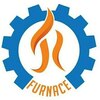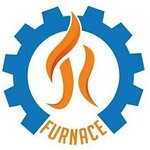SQF Furnace: Enhancing Heat Treatment with Precision and Protection
5 de Maio de 2025, 14:11 - sem comentários ainda | Ninguém está seguindo este artigo ainda.In the evolving landscape of industrial heat treatment, the SQF furnace, or Sealed Quench Furnace, stands out as one of the most efficient and reliable solutions for controlled atmosphere processing. Designed to deliver consistent results across a wide range of steel components, SQF furnaces are integral to industries requiring precise hardening, carburizing, or carbonitriding with minimal part distortion and surface decarburization.
What Is an SQF Furnace?
An SQF (Sealed Quench Furnace) is a type of batch heat treatment furnace that allows for the treatment of steel parts in a controlled atmosphere followed by immediate quenching—without exposing the components to open air. This ensures excellent surface quality, uniform mechanical properties, and minimal oxidation. The furnace consists of two main chambers: a heating (or carburizing) chamber and a quenching chamber, both operating within a sealed system.
Working Principle of an SQF Furnace
-
Loading & Atmosphere Sealing
Components are placed into trays or baskets and loaded into the furnace’s hot zone. A protective atmosphere (often endothermic or nitrogen-based gas) fills the chamber to prevent oxidation. -
Heat Treatment Process
Depending on the treatment—carburizing, hardening, or annealing—the furnace heats the load to the required temperature (usually between 850°C to 950°C) and holds it to allow uniform heat penetration or carbon diffusion. -
Sealed Transfer to Quenching Chamber
After heat treatment, the load is automatically moved to the quench chamber through a sealed vestibule, preventing air ingress and ensuring parts are not exposed to oxygen. -
Quenching Phase
Rapid cooling using oil, gas, or polymer is performed in the sealed quench chamber, locking in the desired microstructure and mechanical properties such as hardness and wear resistance. -
Cooling & Unloading
After quenching, parts are cooled further and prepared for unloading, post-processing, or tempering.
Key Advantages of SQF Furnaces
-
Oxidation-Free Surface Finish
The sealed system protects metal parts from oxidation and decarburization, maintaining clean and bright surfaces. -
Dimensional Accuracy
Controlled heating and sealed quenching minimize distortion and ensure tight tolerances. -
Versatility
Ideal for carburizing, carbonitriding, hardening, annealing, and tempering processes. -
Automation Ready
Supports fully automated loading, heating, and quenching cycles for high-volume production lines. -
Consistent Results
Uniform temperature and gas distribution enable repeatable heat treatment cycles with reliable outcomes.
Industries That Use SQF Furnaces
-
Automotive: gears, shafts, transmission parts
-
Aerospace: fasteners, critical fittings
-
Tooling: dies, cutting tools
-
General Engineering: bearings, pins, bushings
Conclusion
The SQF furnace represents a significant advancement in metallurgical processing. Its ability to deliver controlled heat treatment within a sealed environment ensures superior product quality, enhanced mechanical properties, and reduced post-processing needs. Whether you're manufacturing automotive gears or precision aerospace components, an SQF furnace ensures you meet stringent quality standards while optimising operational efficiency.


0sem comentários ainda
Por favor digite as duas palavras abaixo